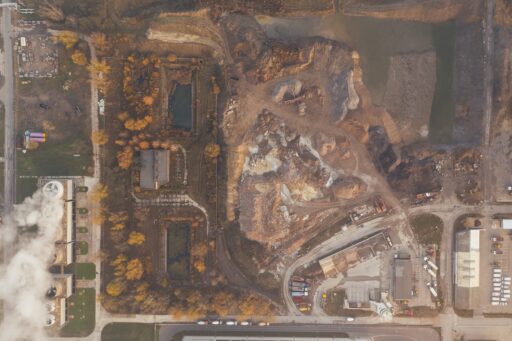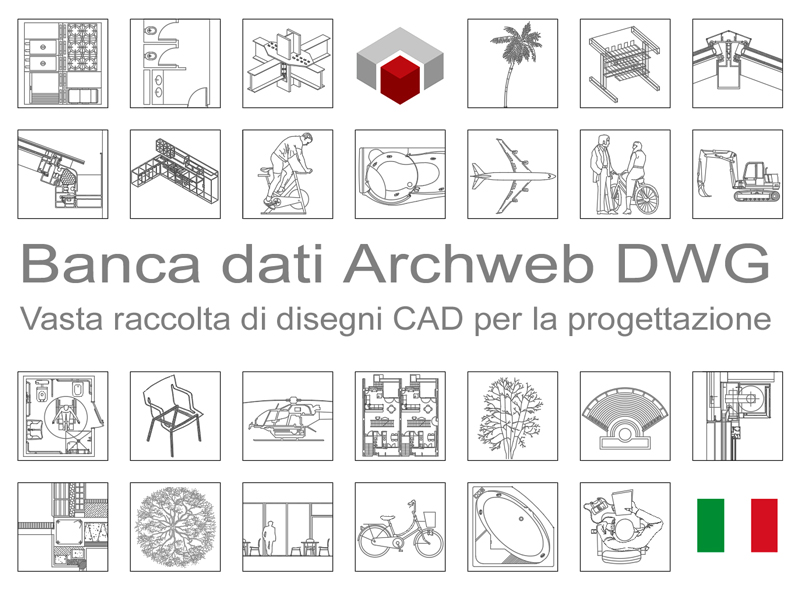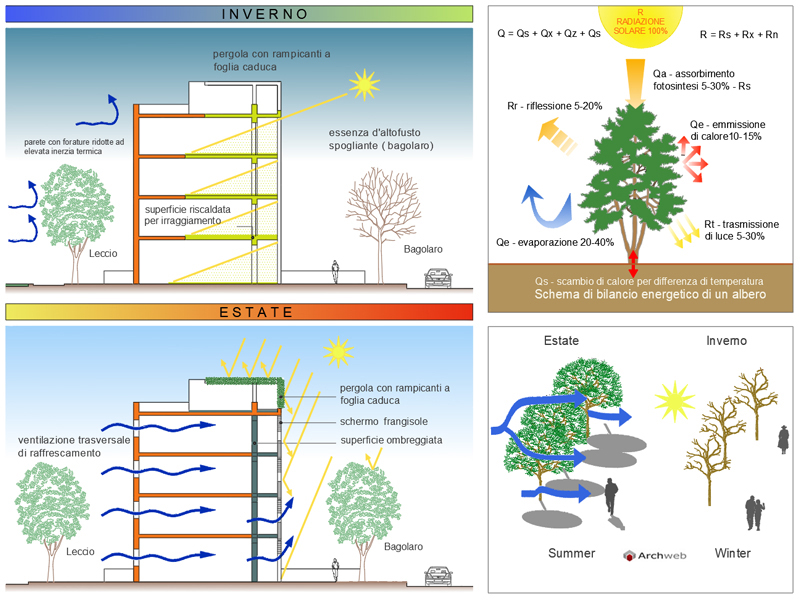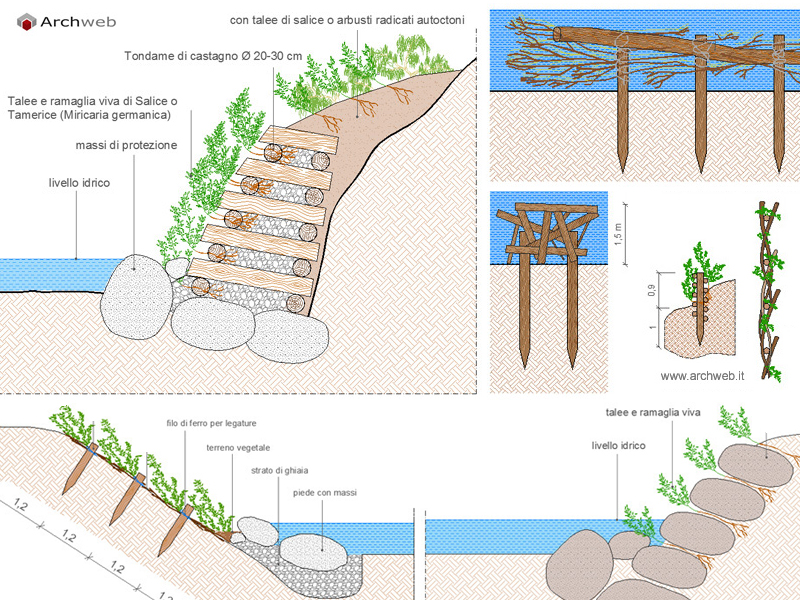VIA – Environmental Impact Assessment
Procedure - Processes - Functionality - Adaptation to European legislation

Generality
At European level, Directive no. 337 of 06.27.1985 concerning the EIA – Environmental Impact Assessment involves both public and private entities.
When carrying out large works, therefore, it is necessary to consider the impact it will have on the environment, the repercussions this will have on the landscape, flora, fauna and human life.
At European level in 1991 the UN sponsored the adoption of a Convention on Environmental Impact Assessment in a Transboundary Context in agreement with 27 countries, including the European Community; the purpose of the convention is to produce assessments and activities aimed at environmental protection in multiple countries.
Following the Convention on Environment Impact (1997), in its evolution and modification, it arrives at the definition of a new discipline concerning the assessment of environmental impact with the directive. 2014/52/UE E, introduces the community right to strategic environmental assessment (SEA).
The SEA aims at sustainable development and promotion aimed at guaranteeing a high level of environmental protection, considering its integration through the adoption and development of plans and programs.
The Strategic Assessment is therefore a preventive analysis of the effects that could occur on the environment in the implementation of certain actions and planning on the landscape.
The guidelines and general contents are set by the community directive and contained in the SEA, each member state has the task of developing specific procedures for each country through the development of plans and programs.
Environmental procedures in Italy
With the introduction of the Environmental Code Legislative Decree 152/2006, in its subsequent additions among its substantial amendments, the AIA regulation is introduced (previously contained in Legislative Decree 59/2005) which coordinates the EIA and VAS simplifying the approval process.
With Legislative Decree no. 46/2014, further changes are introduced to Part II and in particular to the AIA, to implement the directive. 2010/75/EU relating to industrial emissions. In Legislative Decree 91/2014, with. with modification in L. 116/2014, however, we find the changes regarding EIA in reference to the new European directives. In the version updated to 2020 we specifically find:
Part II: Procedures for the strategic environmental assessment (SEA), for the environmental impact assessment (EIA) and for the integrated environmental authorization (IPPC)
Annexes to Part II:
- Annex I – Criteria for verifying the eligibility of plans and programs referred to in Article 12.
- Annex II – Projects under state responsibility.
- Annex III – Projects under the responsibility of the regions and autonomous provinces of Trento and Bolzano.
- Annex IV – Projects subjected to verification of eligibility under the jurisdiction of the regions and autonomous provinces of Trento and Bolzano.
- Annex IV-bis – Contents of the Preliminary Environmental Study referred to in article 19 (annex introduced by article 22 of Legislative Decree no. 104 of 2017).
- Annex V – Criteria for the verification of eligibility referred to in article 19 (annex thus replaced by article 22 of Legislative Decree no. 104 of 2017).
- Annex VII – Contents of the environmental impact study referred to in article 22 (annex thus replaced by article 22 of Legislative Decree no. 104 of 2017).
Title III: the definition of the procedure inherent to the ENVIRONMENTAL IMPACT ASSESSMENT is found, transformed by the changes introduced by Legislative Decree 104/2017. In particular:
- Art. 19 – Method of carrying out the procedure for verifying eligibility for EIA
- Art. 20 – Definition of the level of detail of the project documents for the purposes of the EIA procedure
- Art. 21 – Definition of the contents of the environmental impact study
- Art. 22 – Environmental impact study
- Art. 23 – Presentation of the request, start of the EIA procedure and publication of the documents
- Art. 24 – Public consultation, obtaining opinions and cross-border consultations
- Art. 24-bis – Public inquiry
- Art. 25 – Assessment of environmental impacts and EIA provision
- Art. 26 – Integration of the EIA provision in the authorization documents
- Art. 27 – Single provision on environmental matters
- Art. 27-bis – Single regional authorization provision (in the case of EIA procedures under regional jurisdiction)
- Art. 28 – Monitoring
- Art. 29 – Sanctioning system
The VIA is a procedural process to which a plant or work must be subjected in order to predict its impact on the environment; in this regard, possible alternatives and interventions are identified to minimize the impact in favor of protection.
The Environmental Impact Assessment procedure applies only to entities, whether public or private, that may have a significant environmental impact, as defined by Article 1 of Directive 85/337/EC.
The procedures in identifying the effects, both direct and indirect, for works carried out for plans and programs that affect the following factors and their mutual interactions:
- Flora, fauna, and man.
- Climate, landscape, air, water and soil.
- Cultural heritage and material assets.
The projects concern the implementation of works on systems, construction and works on the landscape (also including those deriving from the use of the land and the exploitation of its resources). The final client will therefore request authorization from the competent authority for execution.
On 21 July 2017, the new regulations for environmental impact assessment come into force, introduced with the Legislative Decree of 16 June 2017, number 104, published in the Official Journal no. 156 of 06.07.2017. Substantial changes occur in the provision, concerning both public and private projects, inherent to the 2014 European directive. 52.EU of the P.E.C. (which modifies Directive 2011.92.UE)
The current EIA regulation is modified to proceed with the Environmental Impact Assessment (EIA), to make the procedures more effective by increasing the level of environmental protection.
In this way, contribute to the unlocking of the potential resulting from investments in infrastructure works to relaunch sustainable growth, through the correction of the critical issues encountered by administrations and businesses.
The decree responds to the need to overcome the fragmentation of the procedural process as regards both the conclusion of the EIA procedure (approximately 3 years) and the verification of eligibility (11.4 months) due to the slowdown in the evaluation process of the projects and the dispersion of regulatory competences and regulations between the State and the Regions.
Specifically, among the most significant elements of the reform we have:
- The proponent may request, as an alternative to the ordinary EIA provision, the release of a “single environmental provision”, which coordinates and replaces all qualifications or authorizations attributable to environmental factors.
- The overall reduction of the time for the conclusion of the procedure, applying administrative substitution in the event of non-compliance in the event that the deadline which has become peremptory is not respected, according to the administrative-accounting regulations.
- The application of a transitional rule in order to integrate this proposal and facilitate pending proceedings.
- The new definition of “environmental impacts”, reformulated according to the requirements of the EU directive; Integrating the concept of significant direct and indirect effects of a project on population, human health, cultural heritage and landscape.
- I have the opportunity to present design and detailed documents equivalent to those of a feasibility study; allowing the impacts to be assessed and discussions to be opened with the competent authorities at any time.
- In the “screening” phase, a preliminary environmental study will be sufficient, and no longer the mandatory opinion of the eligibility verification.
- If there are modifications or extensions of existing works, the request for a “pre-screening” of the preliminary evaluation of the project and the identification of the procedure to be started is forwarded to the competent authority.
- The establishment of a full-time technical support committee, which will be responsible for accelerating and making the investigations more effective. To improve the performance and organize the functioning of the environmental impact assessment commission.
- Standardization of procedures throughout the national territory, modulating the different skills and the division of tasks between the State and the Regions.
- The complete digitalization of information processes.
The environmental impact assessment procedure
The projects subjected to EIA are listed in Annex I to the community directive. If the project to be carried out is included in this annex, the client (article 5 of the directive) must provide all the documentation required in the following annex IV:
- Description of the project’s physical characteristics and land use requirements during construction and operation.
- Description of production processes.
- The evaluation of the quality, type of residues and emissions expected during the development of the project deriving from the proposed activity, such as water pollution, noise pollution, water pollution, etc.
The client’s main alternatives examined, through a summary description:
- Potential assessment of relative impacts on the environment.
- Potential assessment of the relevant impacts on various environmental behaviors, of water, fauna, flora, air, population, soil, material assets, climate, architectural and archaeological heritage, landscape, and interactions between these factors.
- Short non-technical summary of the information transmitted.
- Summary of any difficulties.
- This documentation is of significant importance both for acquiring the opinions of the competent authorities, but also for requesting authorization competent, but also to request authorization.
- In the event that the project does not fall within Annex I, the client must verify whether the work is nevertheless mentioned in Annex II of the directive. In this regard, Article 4, paragraph 2, which regulates the criteria of the Member States that define the environmental impact assessment procedure in Annex 2, should also be noted.
Purpose
The environmental impact assessment (EIA) as defined in Legislative Decree 152/2006 articles. 23-25, aims to protect human health by contributing to a better environmental and quality of life.
The EIA therefore identifies and systematically evaluates the environmental impacts of a project; it is the only discipline concerning health impacts.
According to community legislation, EIA is a decision support procedure, with the aim of preventive evaluation of the environmental effects of existing proposals. This procedure includes, among other things, the participation of various subjects:
- the proposing entity (client), who formulates the authorization request and draws up the environmental impact document;
- the competent authority that issues at least the final authorization and provides for the consultation and review of the documentation presented by the client;
- the interested public, who must be informed about the contents of the proposed action and the methods of carrying out the procedure. The objective of the EIA is to improve decisions and the planning of activities that can positively influence the impact on the environment, to guarantee and protect the environmental system. Furthermore, the objective is to qualify the procedure in question to avoid irreversible consequences on environmental resources.
Scope and skills
The following are subject to the state jurisdiction procedure:
- List of projects Annex II, part two of Legislative Decree 152/2006.
- List of projects Annex II-bis, part two of Legislative Decree 152/2006, relating to newly constructed works which fall, albeit partially, within natural protected areas (Natura 2000 network).
- List of projects Annex II, second part of Legislative Decree 152/2006; They are useful for the development and testing of new methodologies or products that are not used for more than two years, considering whether the competent authority, following verification of the eligibility for EIA, expresses its opinion on the significant environmental impact.
- List and modification of projects in Annex II, part two of Legislative Decree 152/2006 which involve exceeding the established limit values.
Modifications and extensions to projects listed in Annex II and II-bis, Part Two of Legislative Decree 152/2006 if, following verification of eligibility for EIA, the outcome produces significant and negative environmental impacts.
List of projects Annex II-bis, second part of Legislative Decree 152/2006 if following the verification of eligibility for EIA, in compliance with the criteria and thresholds defined by the decree of the Minister of the Environment and Protection of Land and Sea of 03.30.2015, the authority’s assessment ends with a significant and therefore negative environmental impact assessment;
The projects referred to in Annex II and II-bis in which a preliminary evaluation procedure was started (Articles 6, C.9) concluded with a note from the competent authority and to certify the possibility and/or necessity of submitting the environmental assessment project.
Procedure for verification of subjectability to VAS
The verification of eligibility for SEA is regulated in the identification of procedures by Art. 12, Title II, Part II of Legislative Decree 152/2006 and subsequent amendments
This procedure, also known as screening, is aimed at verifying the Strategic Environmental Assessment and a plan or program.
Regarding the application of the SEA, all plans and programs that involve small changes or affect small areas of local use are subjected to a SEA Suitability Verification, such as:
- Attachments II to IV of Legislative Decree 152/2006 and subsequent amendments and additions and documents for the management of environmental quality in various sectors (agriculture, forestry, fishing, energy, waste management, industrial, land use, etc.)
- Art. 5 Presidential Decree 357/1999 and subsequent amendments. in reference to the possible impacts on the conservation of special protection sites.
References
va.minambiente.it, insic.it/, ingenio-web.it/, snpambiente.it, normattiva.it/
Cover: Photo by Thomas Richter on Unsplash
Riferimenti
va.minambiente.it, insic.it/, ingenio-web.it/, snpambiente.it, normattiva.it/
Cover photo: Thomas Richter on Unsplash









































































